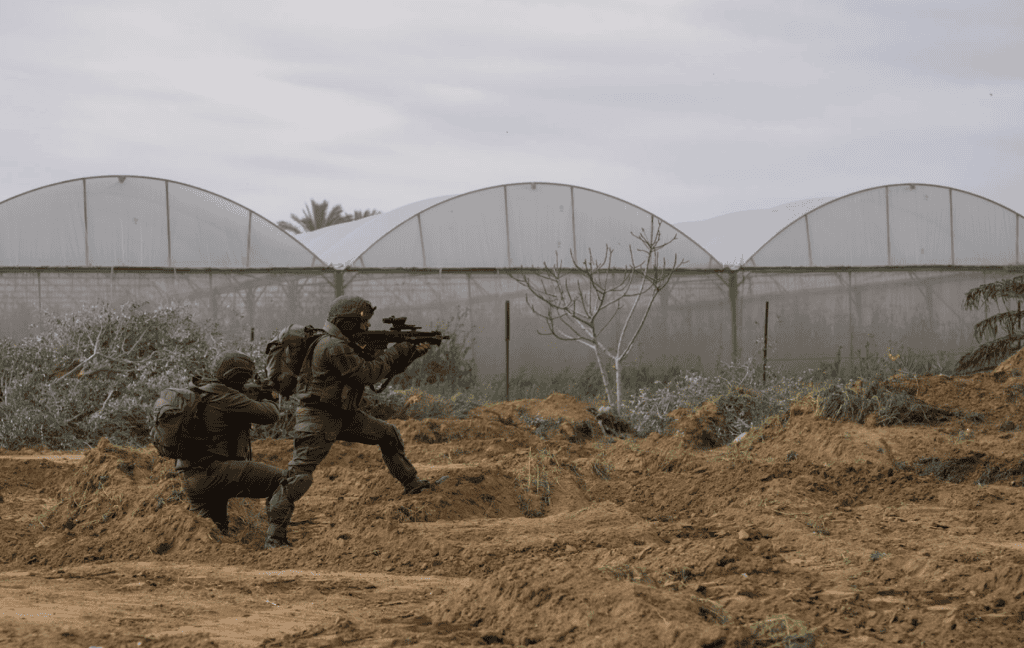
Israel continues to withdraw reserve units that were part of the ground operation in Gaza. The 646th Reserve Brigade had been fighting in the Gaza Strip for several months, the IDF said in a statement on February 20, noting that “the brigade completed its mission in the Gaza Strip last week.” The shift in forces has enabled many of the 300,000 reservists Israel called up in October to have some time at home. At the same time, it enables forces to be moved to other parts of Israel also facing threats, including northern Israel.
The 36th division, which played a key role in cutting off northern Gaza from central Gaza in late October, was redeployed in mid-January. Although its 7th armored brigade remained in Khan Younis, other elements of the division headed to northern Israel where the division is based to prepare for threats that may emerge. The 5th reservist infantry brigade, which consists of infantry who previously served in the Givati brigade — one of Israel’s regular infantry units, was withdrawn at the end of January. The 4th armored ‘Kiryati’ reserve brigade, the 55th reserve paratroopers brigade, the 551st reservist brigade and the 14th armored reservist brigade were also withdrawn.
The shift in forces comes as both clashes and airstrikes in Gaza have been reduced in recent weeks. The last major fighting occurred in Khan Younis, a battle that began in December and has now largely ended. IDF forces entered the Nasser Hospital in Khan Younis last week and detained hundreds of terrorists. Nasser Hospital presented many complexities for the IDF due to the more than 8,000 people sheltering near the complex. According to the IDF, most of them were evacuated. Israel worked with medical staff at the hospital and had Arabic speakers who could help communicate with the staff over the multiple days in which Israel was searching the area for terrorists. Hamas has generally retreated to areas near hospitals, either entering the facilities directly or operating near them and underneath them in tunnels. In northern Gaza, the Shifa, Indonesian and Rantisi hospitals were also sites of similar scenes.
The redeployment of the 646th brigade sheds light on both IDF activity and challenges that await in the next phase of operations in Gaza. The unit had operated in the area called the “central camps,” which consists of four densely populated towns built around refugee camps established in the 1950s. The 646th operated near Bureij and Nuseirat. “At the end of their mission in the central camps, they continued to operate in the southern Gaza Strip in the Khan Yunis area. In their activity, they completed an operation in the Abasan area, in which they eliminated a large number of terrorists and located and confiscated large quantities of weapons. During the operation dozens of terrorists who hid within the civilian population were detained,” the IDF said.
On February 20, the IDF put out a statement in Arabic calling on Gazans in the neighborhood of Zaytun south of Gaza City to evacuate. This area was already a scene of fighting, and it appears residents have slowly returned. Now they are being asked to go to the Mawasi area near the coast, which is designated as a humanitarian zone. This would appear to indicate that the IDF believes threats have returned to this area south of Gaza City. In the past, the IDF conducted new raids into places like Shati in the north that had already been cleared.
With operations winding down in many areas of Gaza, Israel has also improved its ability to rapidly target rocket launches from Gaza. Those launches have been reduced to just a handful a week. On February 17, the IDF said that a terrorist who launched a rocket toward Ashkelon was “eliminated” in under 30 minutes. On February 19, the IDF said that a rocket was fired at the border community of Beeri. “A few minutes after the rocket was fired, soldiers of the Nahal Brigade identified the terrorist responsible for the launch in the area of Gaza City and directed an IAF aircraft to strike and kill him.” This represents a rapid “closing of the loop” in being able to detect, locate and target rocket launchers and individuals linked to them.







